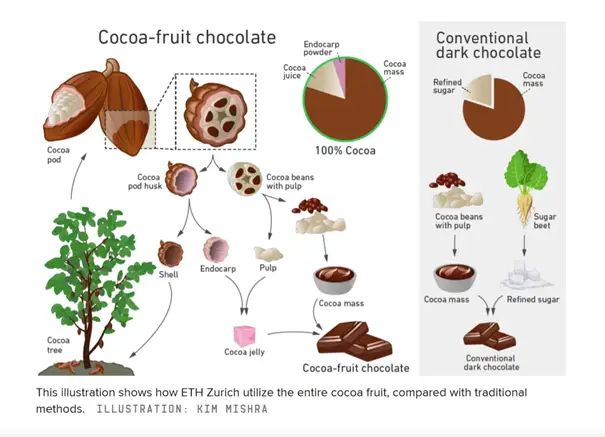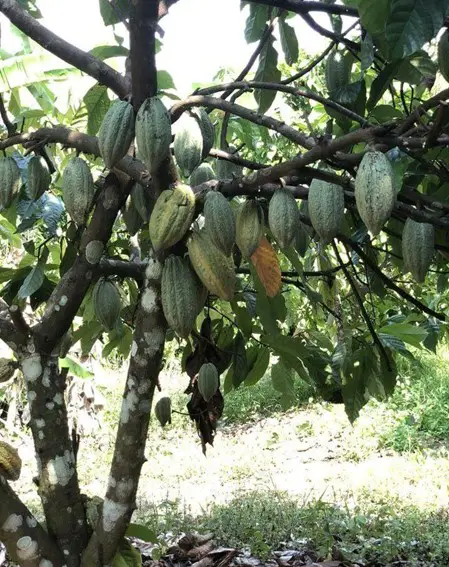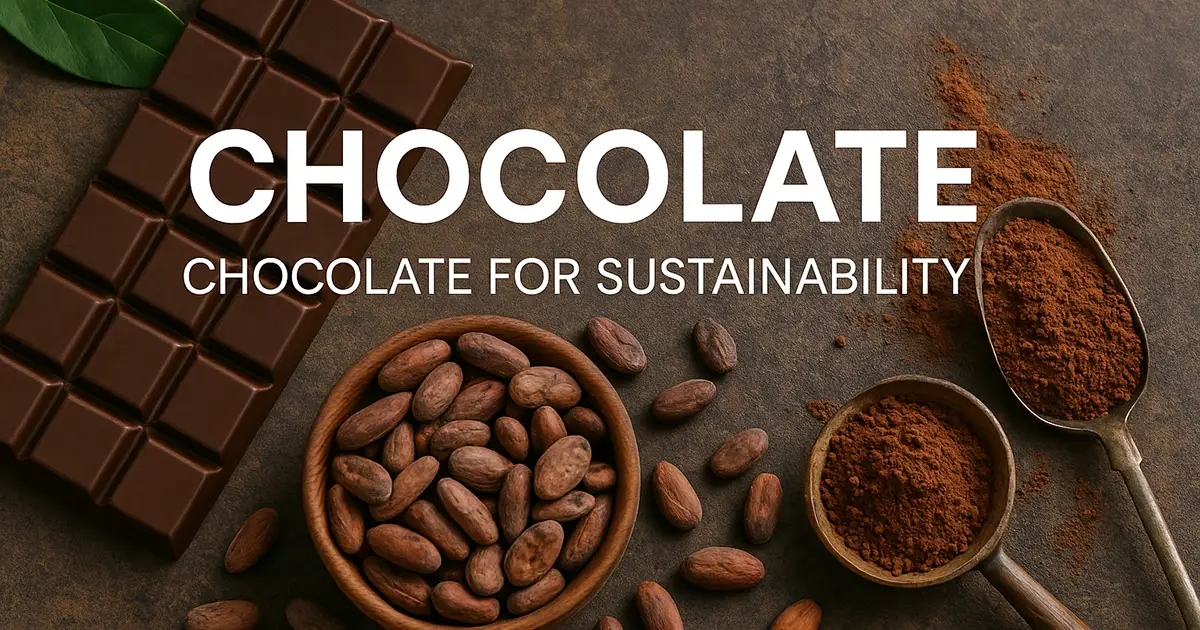Compiled by
Professor Tippawan Lorsuwannarat, Ph.D.
Acting President, NIDA
Over a decade ago, Thai entrepreneurs possessed limited knowledge and expertise in chocolate production. This was primarily because traditional Thai desserts relied heavily on flour, sugar, and coconut milk. While Portuguese settlers during the Ayutthaya era introduced desserts incorporating eggs, chocolate remained largely unfamiliar. Thanks to the efforts of Thai entrepreneurs—who blended traditional wisdom with a commitment to developing chocolate recipes from cacao, a relatively new crop in Thailand—the country now boasts internationally recognized chocolate production. These advancements have revitalized the domestic chocolate market and generated new opportunities in both agriculture and the confectionery industry. This progress has also reduced dependence on imported chocolate, increased national revenue, alleviated poverty in rural communities, narrowed inequality, and sustainably enhanced the quality of life for farmers.
The Global Chocolate Market
Currently, the global cacao and chocolate markets are experiencing steady growth. In 2023, the global cacao market was valued at $16 billion, and by 2028, it is projected to grow at an annual rate of 7% (CBI, 2024). In 2022, the top five cacao-producing countries were Côte d’Ivoire (37.9% of global production), Ghana (18.8%), Indonesia (11.3%), Ecuador (5.7%), and Cameroon (5.1%) (FAO, 2022). In contrast, Thailand’s production amounted to only 1,256 tons, representing a mere 0.02% of global output. The 2023–2024 El Niño phenomenon caused droughts in major cacao-producing regions, leading to lower yields and higher cacao prices.
In terms of import value, the top five cacao-importing countries include the Netherlands ($2.18 billion), Malaysia ($1.49 billion), Germany ($1.34 billion), Belgium ($977 million), and the United States ($804 million) (Bangkok Business News, November 16, 2024).
The global chocolate market is expected to continue expanding, driven by several factors. First, the growth of online sales channels has significantly extended distribution networks. Second, ongoing innovations in beverages, baked goods, and confectionery are fueling consumer demand. Lastly, dark chocolate—rich in beneficial nutrients such as zinc, magnesium, phosphorus, copper, and iron (Eske, 2019)—has gained popularity due to its health benefits. Research has shown that dark chocolate can improve blood circulation, lower blood pressure, enhance brain function, and reduce the risk of heart disease (Desideri, 2012; Georgia State University, 2024; Ludovici, 2017; Ried, 2017; Zeli, 2022).
The chocolate market is increasingly oriented toward health-conscious products, emphasizing organic and natural ingredients. Consumers are also placing greater value on sustainability and the ethical sourcing of cacao beans. Consequently, companies across the supply chain are compelled to implement transparent practices and innovate in alignment with these evolving consumer expectations.
During the COVID-19 pandemic, despite widespread economic disruptions and business closures, the chocolate market experienced growth. Many consumers stockpiled chocolate as a source of comfort, resulting in a 4.2% market growth in 2020 (The National Confectioners Association, 2020).
Health experts report that moderate chocolate consumption can elevate serotonin levels, which help relax the brain and reduce symptoms of depression. Chocolate also stimulates the release of endorphins—hormones associated with happiness—thereby supporting emotional well-being and mood regulation. According to the World Population Review, approximately 3.4% of the global population—or between 251 and 310 million people—suffers from depression. As a result, the growing prevalence of depression is expected to further increase global demand for chocolate.
Europe currently dominates the global chocolate market, accounting for 47.41% of global revenue. High demand for dark chocolate has been a major driver of this growth. In 2020, Europe imported 1.52 million tons of chocolate, remaining the world’s largest chocolate producer. Meanwhile, the Middle East and Africa are emerging as promising markets between 2024 and 2030, supported by health-conscious consumers and rising demand for organic and ethically sourced chocolate.
The Thai Cacao and Chocolate Market
Cacao was first introduced to Southeast Asia by Dutch and Spanish settlers during the 16th and 17th centuries. In Thailand, cacao cultivation began in the early 20th century and received government support in the 1950s. Initially, income from cacao farming was low, with pods selling for just 3–4 baht per kilogram. By 2013, Thai entrepreneurs began experimenting with cacao processing for chocolate production. However, high import taxes at the time forced many factories to close, leading to a decline in cacao cultivation.
In recent years, Thai entrepreneurs have successfully revitalized the industry, now producing hundreds of tons annually. The rising popularity of “bean-to-bar” and “single-origin” concepts has highlighted distinctive flavor profiles linked to specific regions. Major chocolate production hubs include Chiang Mai and Bangkok, with cacao sourced from various parts of the country.
In 2023, Thailand exported cocoa and cocoa-based products worth $87 million. From January to September 2024, exports reached $74 million, reflecting a 16.4% year-on-year increase. Key export markets include Japan, China, Myanmar, Malaysia, and India—with Japan and China seeing growth of over 40%. Other rapidly growing markets include Canada (392%), the United Arab Emirates (90.7%), the United States (46.3%), Indonesia, and Russia. Thailand’s cocoa production in 2023 totaled 3,360 tons—a 167.6% increase from the previous year—driven by expanded harvesting areas in southern provinces such as Nakhon Si Thammarat, Phatthalung, and Ranong (Bangkok Business News, November 16, 2024).
In 2024, the Thai cocoa and chocolate product market was valued at approximately 8.7 billion baht, a 4.7% increase from the previous year. This includes 8.4 billion baht in confectionery products and 300 million baht in hot beverage powders (Food Institute, December 2024).
Chocolate for Sustainability
Imported chocolate in Thailand is predominantly premium, sourced from Europe, the United States, and Japan. However, domestic value-added chocolate production—particularly through the “bean-to-bar” approach—is gaining momentum. This method involves overseeing the entire production process, from cacao cultivation to the finished chocolate bar. While large companies often depend on semi-finished products such as couverture chocolate, cocoa powder, and cocoa butter, bean-to-bar producers manage every step: planting, harvesting, fermenting, roasting, and packaging.
Bean-to-bar production requires rigorous attention to detail. Producers must select high-quality cacao beans, adopt sustainable farming practices, invest in advanced machinery, and create innovative packaging. They also emphasize fair trade practices by ensuring fair compensation for high-quality ingredients while upholding environmental and social responsibility.
Kan Vela Chocolate, founded by Mr. Thana Kunaraksvong, is a pioneer in Thailand’s craft chocolate industry. Operating under a “tree-to-bar” model, the company manages every stage of cacao cultivation and chocolate production. Kan Vela has received several prestigious international accolades, including the International Rising Star Award in 2021 from the UK’s Academy of Chocolate.
Mr. Thana’s contributions go beyond chocolate manufacturing. He actively educates and trains cacao farmers to produce premium-grade beans suited for high-quality chocolate. His focus on unique flavor profiles and full transparency throughout the production process has set new standards in the industry. Moreover, his initiatives promote local sourcing and fair-trade practices, enhancing both product quality and social responsibility. Craft chocolate producers like Mr. Thana exemplify a broader commitment to sustainability and fairness.
NIDA’s Sikiew Campus collaborates with Kan Vela Chocolate to train local farmers in cacao cultivation and chocolate production. These farmers have the option to sell their cacao to Kan Vela or develop their own chocolate products. This initiative supports fair trade, reduces inequality, and improves farmers’ livelihoods while fostering environmental sustainability.
Looking ahead, government policies that encourage the use of locally grown cacao for chocolate production could significantly strengthen Thailand’s agricultural sector while contributing to environmental preservation. Such policies would offer farmers more diverse career opportunities and increase national income. The dedication to craftsmanship and innovation demonstrated by Thai chocolate producers positions their products distinctively in the global market, enhancing international appeal and demand.
Figure 1: From Cacao to Chocolate

Source: wired.com/story/chocolate-has-a-sustainability-problem-science-thinks-its-found-the-answer/


Source: silva-cacao.com/mews/thailand-land-of-smiles-genius-cacao-genetics/
References:
- Centre for the Promotion of Imports from Developing Countires (CBI) 2024.
- Desideri, G. et al. (2012). Benefits in Cognitive Function, Blood Pressure, and Insulin Resistance through Cacoa Flavonol Consumption in Elderly Subjects with Mild Cognitive Impariment: The Cocoa, Cognition, and Aging (CoCoA) Study. Hypertension 60(3). https://doi.org/10.3389/fnut.2017.00036.
- Eske, J. (2019). What are the health benefits of dark chocolate? https://www.medicalnewstoday.com/articles/270272
- Georgia State University. Elamad, W. (2024) Dark Chocolate might boost energy and improve brain health, Study Says. https://lewis.gsu.edu/2024/12/16/dark-chocolate-might-boost-energy-and-improve-brain-health-study-says/
- Ludovici, V. et al., (2017) Cocoa, Blood Pressure, and Vascular Function. Frontiers in Nutrition. Nutritional Immunology. 4 https://doi.org/10.3389/fnut.2017.00036.
- Ried, K., Fakler, P., Stocks, N.P. (2017). Effect of Cocoa on Blood Pressure. Cochrane Database Syst Rev.
- Zeli, C. et al. (2022) Chocolate and Cocoa-Derived Biomolecules for Brain Cognition during Ageing.
- Antioxidants (Basel). 11(7): https://doi.org/10.3390/antiox11071353.
- https://www.markrinchocolate.com
- https://bartalks.net/the-thai-cacao-struggle
- https://www.grandviewresearch.com/industry-analysis/chocolate-market
- https://damecacao.com/thailand-chocolate-culture
- https://anarchychocolate.com/#toggle-id-3-closed





